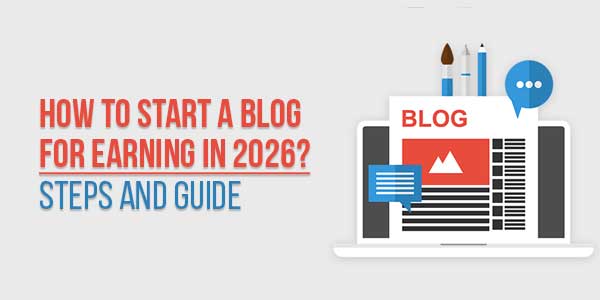
So you’re thinking about starting a blog that actually makes money in 2026? Maybe you’ve been toying with the idea for a while, or perhaps you’re completely new to this whole blogging thing. Either way, I’ve been where you are now.
Let me tell you a quick story. Back in 2018, I started my first blog with nothing but a free WordPress.com account and a whole lot of enthusiasm. For the first six months, I made exactly $0. Zilch. Nada. But fast forward to today, and that little passion project brings in a consistent four-figure monthly income.
The blogging landscape has changed dramatically since then, and it’s going to keep evolving. But here’s the secret: the core principles of building a successful, money-making blog haven’t changed. You just need to adapt them to the current environment.
In this guide, I’m going to walk you through exactly how to start a blog that earns money in 2026. No fluff, no get-rich-quick schemes—just practical, actionable advice from someone who’s been there and made all the mistakes so you don’t have to.
Table of Contents
Why Start a Blog in 2026? Isn’t It Too Late?
I get this question all the time. “Isn’t the blogosphere oversaturated? Hasn’t AI taken over? Is there even room for new bloggers anymore?”
Let me be straight with you: yes, there are more blogs than ever before. But no, it’s not too late. Not by a long shot.
Think about it this way: there are more readers than ever too. People consume content at an unprecedented rate. And while AI can generate articles, it can’t replicate human experience, personality, and authentic voice—which is exactly what readers are craving more than ever.
The key isn’t to avoid blogging because it’s “competitive.” The key is to approach it smarter than everyone else. Which is exactly what I’m going to show you how to do.
Finding Your Niche: The Foundation of Everything
Alright, let’s get down to business. The first step—and arguably the most important—is choosing your niche. This is where most aspiring bloggers mess up. They either choose something too broad (“I’ll write about travel!”) or something they think will make money but have zero interest in.
Here’s the thing: if you don’t genuinely care about your topic, you’ll burn out faster than a match in a hurricane. Trust me on this.
How to Choose the Right Niche
Ask yourself these three questions:
- What could I talk about for hours without getting bored? (Your passion)
- What do I have experience or knowledge in? (Your expertise)
- Are people spending money in this area? (Profit potential)
The sweet spot is where all three circles overlap. Maybe you’re a registered nurse who’s passionate about holistic wellness. Or a teacher who loves creating educational crafts for kids. Or a finance professional who geeks out about FIRE (Financial Independence, Retire Early).
These are all perfect starting points. You have knowledge, passion, and there are monetization opportunities.
Evaluating Profit Potential
Once you have some ideas, it’s time to do some quick research:
- Check if there are advertisers in this space (Google Ads keyword planner can help)
- See if there are affiliate programs related to your niche
- Look at what products people are already buying in this category
If you want to dive deeper into niche research techniques, I found this fantastic resource on how to do keyword research for your blog that breaks down the process step by step.
Setting Up Your Blog: Technical Stuff Made Simple
Now, I know the technical side can feel intimidating. Domain names, hosting, WordPress—it’s enough to make your head spin. But I promise it’s not as complicated as it seems.
Choosing a Domain Name
Your domain name is your digital address. It’s how people find you. Here’s what makes a good one:
- Easy to spell and remember
- Reflects your blog’s topic or your brand
- Preferably a .com (but other extensions work too)
- Not too long or complicated
Brainstorm a few options, check their availability, and pick one that feels right. Don’t stress too much about this—you can always rebrand later if needed.
Selecting a Web Host
Your web host is where your blog lives online. For beginners, I recommend starting with a shared hosting plan from a reputable provider. They’re affordable and perfect for new blogs that don’t get tons of traffic yet.
As your blog grows, you can always upgrade to more powerful hosting options. The important thing is to just start somewhere.
Installing WordPress
WordPress powers over 40% of all websites for a reason—it’s flexible, relatively easy to use, and has endless customization options. Most hosting providers offer one-click WordPress installation, which makes the process incredibly simple.
Once you’ve got WordPress installed, choose a clean, responsive theme that looks good on both desktop and mobile. Mobile responsiveness is non-negotiable in 2026—more people browse on their phones than on computers.
If you’re feeling overwhelmed by the technical setup, check out this guide on WordPress theme customization that walks you through the process.
Creating Content That Converts Readers Into Customers
Here’s where the magic happens. You can have the prettiest blog in the world, but without great content, nobody will stick around.
And when I say “great content,” I’m not just talking about well-written articles. I’m talking about content that solves problems, answers questions, and provides genuine value to your readers.
Understanding Search Intent
In 2026, understanding search intent is more important than ever. You need to know why someone is searching for a particular phrase.
Are they looking to buy? Are they researching? Are they trying to solve a specific problem?
Your content needs to match that intent. If someone searches “best budget laptops for students,” they’re probably in research mode, comparing options before making a purchase. Your article should help them do exactly that—compare options, highlight pros and cons, and maybe even include affiliate links to their top choices.
The Pillar-Cluster Model
One of the most effective content strategies right now is the pillar-cluster model. You create one comprehensive “pillar” post that covers a broad topic, then create several “cluster” posts that dive into specific subtopics, all linking back to the pillar post.
This helps search engines understand the structure of your content and establishes your authority on the topic. For example, if your pillar post is “Complete Guide to Vegan Baking,” your cluster posts might be “Best Egg Substitutes for Vegan Baking,” “How to Make Vegan Buttercream Frosting,” and “Vegan Baking Tips for High Altitude.”
Writing for Humans First, Algorithms Second
Yes, SEO is important. But in 2026, Google’s algorithms are smarter than ever at identifying quality content that actually helps people.
The best SEO strategy is creating content that people genuinely find useful, share with others, and come back to time and time again.
Write like you’re talking to a friend. Break up your text with subheadings, images, and bullet points. Make it skimmable but substantial. Answer the question thoroughly. Add your unique perspective or experience.
If you want to improve your writing skills specifically for blogging, this article on how to improve writing skills in English has some practical tips that helped me early on.
SEO in 2026: What’s Changed and What Haven’t
Search engine optimization might seem like a mysterious dark art, but it’s really about making your content as accessible and valuable as possible to both readers and search engines.
Core Web Vitals and User Experience
Google now prioritizes user experience more than ever. Core Web Vitals—loading speed, interactivity, and visual stability—are ranking factors. This means:
- Your site needs to load quickly (under 3 seconds)
- Buttons and links should work properly
- Pages shouldn’t jump around as they load
Thankfully, most modern WordPress themes are optimized for these factors, but it’s something to keep an eye on.
E-A-T: Expertise, Authoritativeness, Trustworthiness
Google wants to surface content from credible sources. This is especially important for “Your Money or Your Life” (YMYL) topics like finance, health, and safety.
To demonstrate E-A-T:
- Include author bios with your credentials/experience
- Be transparent about any affiliate relationships
- Update old content regularly
Voice Search Optimization
With the rise of smart speakers and voice assistants, optimizing for voice search is becoming increasingly important. Voice searches tend to be longer and more conversational than typed queries.
To optimize for voice search:
- Use natural language and question-based phrases
- Provide concise, direct answers to common questions
- Structure your content so it’s easy for voice assistants to parse
For more advanced SEO strategies, this post on advanced SEO techniques digs deeper into tactics that can help you rank higher.
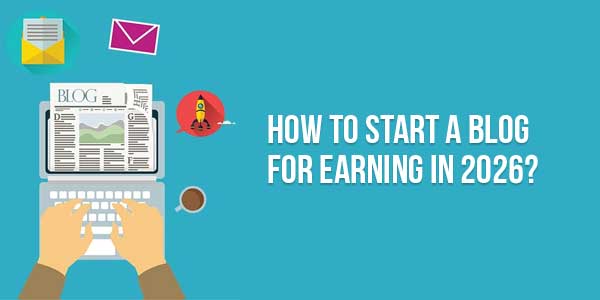
Building an Audience Before You Monetize
Here’s where many aspiring bloggers get it wrong. They try to monetize too early, before they’ve built any trust or audience.
Imagine walking into a party and immediately trying to sell something to everyone you meet. How do you think that would go? Not well, right?
Blogging works the same way. You need to provide value first, build relationships, and then—once people know, like, and trust you—you can introduce monetization strategies.
Email List Building
If I could give only one piece of advice to new bloggers, it would be this: start building your email list from day one.
Your email list is your most valuable asset. Social media algorithms change, search engine rankings fluctuate, but your email list is yours. You control it.
Offer a valuable lead magnet—a cheat sheet, checklist, mini-course, or template—in exchange for email addresses. Then nurture those subscribers with regular, valuable emails.
Social Media Strategy
Social media can be a powerful traffic source, but don’t try to be everywhere at once. Pick one or two platforms where your target audience hangs out and focus on building a genuine presence there.
Are your readers mostly professionals? Maybe LinkedIn is your best bet. Creating visual content? Instagram or Pinterest might work better. Sharing quick tips and thoughts? Twitter could be your platform.
The key is consistency and engagement. It’s better to have 1,000 engaged followers than 10,000 who never interact with your content.
Monetization Strategies That Work in 2026
Alright, let’s talk about the part you’ve been waiting for: making money. There are countless ways to monetize a blog, but I’m going to focus on the ones that are most effective and sustainable in today’s landscape.
Affiliate Marketing
Affiliate marketing—earning a commission for promoting other people’s products—is one of the most popular and effective ways to monetize a blog.
The key to successful affiliate marketing is authenticity. Only promote products you genuinely use and believe in. Your recommendations should feel natural within your content, not like sales pitches.
When writing affiliate content:
- Be transparent about your affiliate relationships
- Focus on how the product solves a problem or improves your reader’s life
- Compare products honestly, including both pros and cons
Display Advertising
Display ads (like Google AdSense) are the easiest way to start making money from your blog, but they’re also the least lucrative in terms of earnings per visitor.
Once your traffic grows, you can apply to premium ad networks like Mediavine or AdThrive, which pay significantly higher rates than basic AdSense.
The downside of display ads is that they can detract from user experience if not implemented carefully. Use them strategically rather than plastering them everywhere.
Digital Products
Creating your own digital products—ebooks, courses, templates, printables—is where many bloggers see their income really take off.
The advantage of digital products is that you keep 100% of the profit (minus payment processing fees), and they establish you as an authority in your niche.
Start by identifying a problem your audience has that you can help solve. Then create a product that provides the solution. Your blog content can naturally lead to your products without feeling pushy.
Services and Coaching
If you have expertise in your niche, offering services or coaching can be a lucrative monetization strategy. This could include:
- Consulting services
- One-on-one coaching
- Freelance work related to your niche
- Paid speaking engagements
The advantage of this approach is that it often commands higher rates than other monetization methods. The downside is that it trades your time for money, which isn’t as scalable as digital products or affiliate marketing.
For more ideas on monetization strategies, check out this comprehensive guide on how to make money online which covers both blogging and other digital income streams.
Staying Consistent: The Secret Sauce
Here’s the unsexy truth about successful blogging: consistency matters more than almost anything else.
I’ve seen incredibly talented writers with brilliant ideas give up after a few months because they couldn’t stay consistent. I’ve also seen mediocre writers achieve amazing success simply because they kept showing up, week after week, month after month.
Blogging is a marathon, not a sprint. It takes time to build traffic, authority, and income. Most bloggers don’t see significant income for at least 6-12 months.
Creating a Content Calendar
One of the best ways to stay consistent is to create a content calendar. Plan your topics in advance, batch your content creation, and schedule posts ahead of time.
Life happens. There will be weeks when you’re sick, busy, or just uninspired. Having content ready to go ensures your blog stays active even during busy periods.
Avoiding Burnout
Blogging burnout is real. I’ve experienced it myself. The key to avoiding it is setting sustainable expectations and boundaries.
Don’t try to publish a new post every day if that’s not realistic for you. It’s better to publish one high-quality post per week consistently than to publish daily for a month and then disappear for three months.
Remember why you started blogging in the first place. Reconnect with that passion when things feel like a chore.
Analyzing and Adapting: The Key to Long-Term Success
The blogging landscape changes constantly. What worked last year might not work next year. Successful bloggers aren’t just good writers—they’re also good analysts who know how to adapt.
Tracking the Right Metrics
It’s easy to get obsessed with vanity metrics like pageviews. While traffic is important, it’s not the only metric that matters.
Focus on:
- Engagement metrics (time on page, bounce rate)
- Email subscribers growth rate
- Conversion rates (for products, affiliates, or ads)
- Returning visitors percentage
These metrics tell you more about the health of your blog than raw traffic numbers alone.
Updating Old Content
One of the most overlooked strategies in blogging is updating old content. That post you wrote two years ago might still be getting traffic, but it could probably use some refreshing.
Regularly audit your content:
- Update outdated information
- Improve formatting and readability
- Add new examples or sections
- Optimize for new keywords
This often provides a better return on investment than creating new content from scratch.
Frequently Asked Questions (FAQs)
How long does it take to start earning money from a blog?
Most bloggers start seeing some income within 6-12 months, but significant earnings usually take 1-2 years of consistent work. It’s not a get-rich-quick scheme, but a legitimate business that requires patience and persistence.
How much money can I realistically make from blogging?
Earnings vary wildly. Part-time bloggers might make a few hundred dollars a month, while full-time professional bloggers can make five or six figures monthly. It depends on your niche, traffic, monetization methods, and how effectively you implement your strategy.
Do I need to be a technical expert to start a blog?
Not at all! Most blogging platforms like WordPress are designed to be user-friendly. You can start with basic technical knowledge and learn as you go. There are also countless tutorials and resources available online to help you with any technical challenges.
How often should I publish new content?
Consistency is more important than frequency. It’s better to publish one high-quality post per week consistently than to publish daily for a month and then disappear. Find a schedule that works for you and stick to it.
Is it too late to start a blog in 2026?
Absolutely not! While there are more blogs than ever, there are also more readers. The key is to find a specific niche, provide unique value, and consistently create quality content. There’s always room for new voices and perspectives.
How important are backlinks for a new blog?
Backlinks are important for SEO as they signal to search engines that other websites consider your content valuable. However, for a new blog, focus first on creating exceptional content. Natural backlinks will follow. You can also actively build quality backlinks through guest posting and relationships with other bloggers.
What’s the best way to build backlinks naturally?
The best way to earn natural backlinks is to create exceptional, link-worthy content. This includes original research, comprehensive guides, unique data, or truly innovative ideas. You can also reach out to relevant websites, offer to guest post, or build relationships with other bloggers in your niche.
Should I pay for backlinks?
I don’t recommend buying backlinks. Search engines penalize this practice, and it often does more harm than good. Focus instead on earning legitimate backlinks through quality content and genuine relationship building. It takes longer but leads to sustainable results.
How many backlinks do I need to rank well?
There’s no magic number. Quality matters more than quantity. A few backlinks from authoritative, relevant sites can be more valuable than hundreds of low-quality links. Focus on earning links from reputable sources in your niche rather than chasing a specific number.
Can social media shares help with backlinks?
While social shares don’t directly count as backlinks for SEO purposes, they can indirectly lead to backlinks by increasing your content’s visibility. When more people see your content, the likelihood that someone will link to it increases. So yes, social media can be part of a broader backlink strategy.
Ready to Start Your Blogging Journey?
Starting a blog that actually makes money in 2026 is absolutely possible. It’s not a mythical unicorn—it’s a real achievable goal if you’re willing to put in the work.
Remember: every successful blogger started exactly where you are now. They had no audience, no traffic, and no idea what they were doing. The only difference between them and everyone who gave up is that they kept going.
They published that first post when it felt awkward. They learned SEO when it seemed confusing. They kept creating content when nobody was reading it.
And eventually, their persistence paid off.
Yours can too.
So what are you waiting for? Pick a niche, set up your blog, and start creating. Your future audience is waiting to hear what you have to say.
I’m rooting for you!



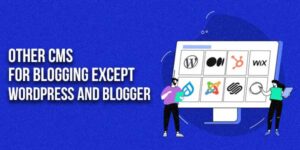




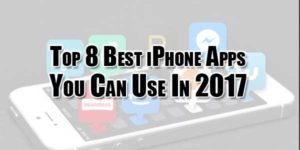



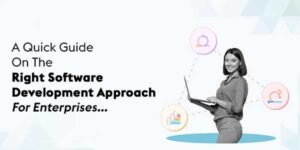





Be the first to write a comment.